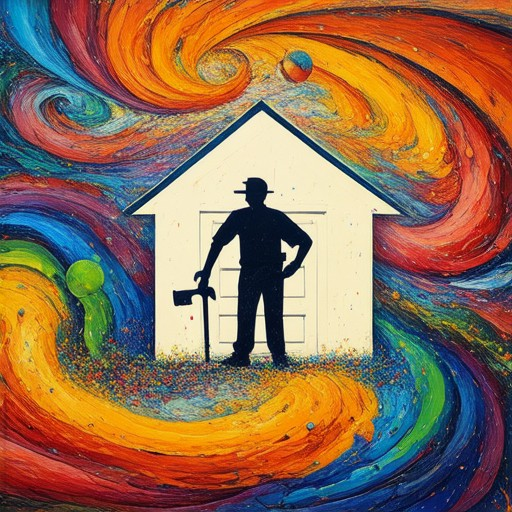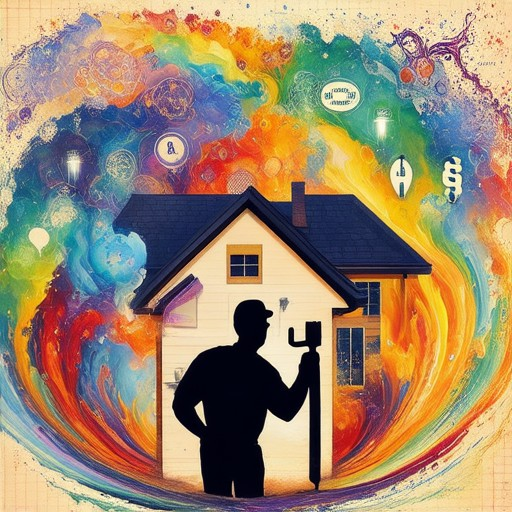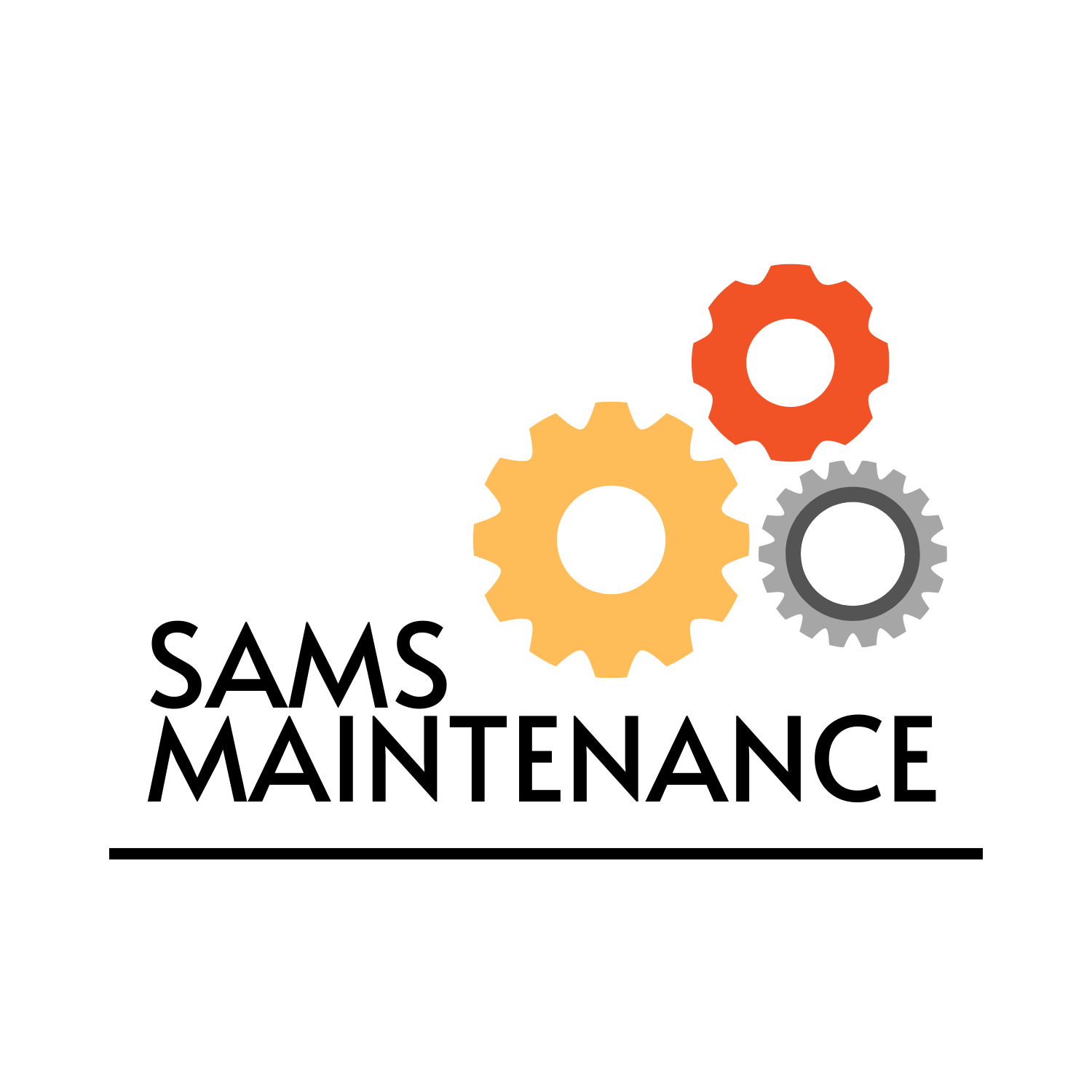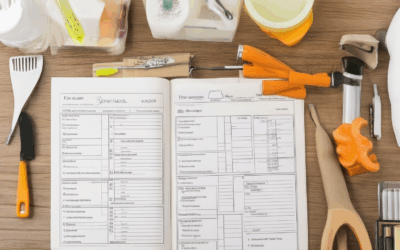Whether you’re a seasoned homeowner looking to enhance your space or a new homeowner eager to save money and take charge of your home environment, DIY projects offer a rewarding way to personalize your living space while gaining valuable skills. With countless possibilities—from simple repairs to creative home decor—DIY tips for homeowners can transform your space and budget. This guide delves into essential tools, common pitfalls to avoid, and how DIY projects can save money while adding value to your home. Explore reliable resources, understand the cultural significance of DIY, and discover why it’s a popular term worldwide. Whether you’re tackling a small project or aiming for a full home renovation, these tips will empower you to achieve your goals efficiently and enjoy the satisfaction of a job well done.
Key Takeaways
– DIY Empowers Homeowners: Tackle projects confidently, boost creativity, and build new skills.
– Saves Money: Reduce costs by handling tasks yourself and exploring affordable solutions.
– Fosters Community Support: Join online forums and tutorials for guidance and inspiration.
– Versatile Across Domains: Apply DIY skills in home improvement, crafting, cooking, and more.
– Challenges and Joys: Embrace autonomy, creativity, and the joy of learning through hands-on experiences.

What Every Homeowner Should Know
- Understand Your Property: Familiarize yourself with your home’s layout, systems, and any pre-existing conditions. Knowing where utilities are located, how appliances function, and potential maintenance needs can prevent costly surprises.
- Maintain Systems Regularly: Schedule regular inspections for plumbing, HVAC, and electrical systems. Address minor issues before they escalate, ensuring your home remains functional and safe.
- Budget Wisely: Create a dedicated budget for home maintenance. Set aside funds for unexpected repairs and planned improvements to avoid financial strain and ensure timely upgrades.
- Know Legal Responsibilities: Understand local housing laws, zoning regulations, and tenant rights (if applicable). This knowledge can help you navigate renovations, rentals, or sales smoothly.
- Improve Energy Efficiency: Invest in energy-saving upgrades like insulation, windows, and smart appliances. These improvements can lower utility bills and contribute to a healthier home environment.
- Ensure Safety Measures: Install smoke detectors, carbon monoxide alarms, and security systems. Regularly test these devices to ensure they’re functioning properly and protect your family in case of emergencies.
- Stay Informed About Local Regulations: Keep up with building codes, zoning laws, and local permits. This knowledge is essential for any home improvements or additions you might consider.
- Build a Strong Community Network: Connect with neighbors and local professionals who can offer advice and services. A supportive community can enhance your living experience and provide valuable resources when needed.
- Develop an Emergency Plan: Prepare for natural disasters, power outages, and other emergencies with a clear plan. Include a communication strategy, emergency contacts, and a checklist of essentials.
Does DIY Actually Save Money?
Whether DIY saves money depends on several factors, including your skill level, time availability, and the complexity of the project. Here’s a breakdown of the key considerations:
- Labor Costs:** – Hiring professionals can be costly, but DIY often requires your own labor. If you’re inexperienced, you may spend more on materials or take longer, increasing overall costs.
- Materials:** – High-quality materials can be pricey, but using secondhand or salvaged items can reduce expenses. Compare prices between new and remanufactured options.
- Time:** – Your time is valuable. If you’re working a full-time job, DIY projects can be time-consuming, potentially costing you lost productivity hours.
- Tools and Equipment:** – Purchasing tools upfront can add to initial costs, though they can be reused for future projects. Renting tools might be cheaper for occasional use.
For many homeowners, DIY projects can be cost-effective, especially for small repairs or updates. However, it’s essential to weigh the time and effort against the potential savings compared to buying new.
When DIY Might NOT Save Money
Sometimes, DIY projects can be just as expensive or even more costly than purchasing new. This is often due to:
- Complexity:** – Projects requiring specialized skills or tools may demand more time and resources, negating cost benefits.
- Opportunity Cost:** – The time spent on DIY could be better utilized elsewhere, like earning income or investing in appreciating assets.
- Quality Concerns:** – DIY might compromise on quality, leading to frequent repairs or replacements, which can be more costly in the long run.
How to Make DIY More Affordable
If you’re determined to try DIY, here are some strategies to keep costs low:
- Start Small:** – Begin with simple, quick projects to build confidence and skills without significant investment.
- Repurpose Materials:** – Transform unused items into new creations, reducing the need for new purchases.
- Join Communities:** – Connect with local DIY groups or forums for advice, materials, and project ideas.
- Learn Efficient Techniques:** – Master quick projects and efficient methods to minimize waste and time.
Ultimately, the decision to DIY hinges on your personal circumstances and goals. While it can save money, it’s crucial to evaluate whether the time and effort align with your financial and lifestyle priorities.

Where Can I Get DIY Advice?
You can find DIY advice through various channels, both online and offline, catering to different interests and skill levels. Here are some reliable resources:
- Online Resources
- DIY Doctor : Offers extensive guides and tips for home improvements, repairs, and maintenance.
- This Old House : Features video tutorials on remodeling, carpentry, and landscaping.
- Fix This, Get That : Provides DIY solutions for common household issues and projects.
- Forums and Communities
- Reddit’s DIY Community : A vibrant forum with tips, projects, and advice from experienced DIYers.
- Facebook DIY Groups : Join communities for sharing ideas and seeking guidance.
- Local Resources
- Hardware Stores : Visit local hardware stores like B&Q or Homebase for expert advice and materials.
- Public Libraries : Many libraries host DIY workshops or lend books on home repair and crafts.
- Social Media
- Workshops and Classes
- Check local community centers or art schools for DIY workshops.
- Some cities offer DIY workshops at adult education centers.
- Books and E-books
- Look for titles by DIY experts like Mark Bittman or Tim Gunn for comprehensive guides.
- Many libraries offer digital versions of DIY eBooks.
- Tool Rentals
- Consider local tool libraries or rental services for accessing equipment without purchase.
These resources provide a mix of tutorials, advice, and community support to help you succeed with your DIY projects.

What Does DIY Stand For?
DIY stands for “Do It Yourself.” It represents a cultural movement that encourages individuals to take control of various tasks and projects traditionally handled by professionals or purchased ready-made. This approach emphasizes self-reliance, creativity, and empowerment, allowing people to learn new skills and save costs.
The DIY philosophy originated in the mid-20th century, gaining popularity alongside the rise of self-sufficiency movements. Initially focused on simple tasks like fixing household items or minor repairs, DIY has evolved to encompass a wide range of activities, including building furniture, crafting, and even electronics.
DIY offers several benefits:
- Empowerment: It allows individuals to develop new skills and gain confidence through hands-on experience.
- Savings: Completing tasks oneself can reduce reliance on external services, saving money.
- Creativity: DIY provides an avenue for personal expression and innovation.
However, it’s important to approach DIY projects thoughtfully. Safety is paramount, as improper use of tools can lead to injuries. Additionally, time management is crucial, as DIY projects often require significant effort and may extend beyond initial estimates.
DIY has fostered a vibrant online community, with platforms like YouTube and forums offering tutorials and support for enthusiasts of all levels. This collaborative environment helps both newcomers and seasoned DIYers share knowledge and tips.
DIY can be applied across various domains, including home improvement, crafting, cooking, and technology. Each area demands unique tools and techniques, offering diverse opportunities for personal growth and creative expression.
Ultimately, DIY embodies a mindset of autonomy and creativity. It challenges individuals to take charge of their surroundings, experiment, and find joy in the process, whether the outcome is perfect or imperfect.
What Do Americans Call DIY?
The term “DIY” stands for “Do It Yourself,” a phrase that has become a widely recognized cultural phenomenon in the United States. Originating in the early 20th century, particularly within the realm of home improvement, DIY refers to the practice of completing tasks or projects independently, often without professional assistance.
D_I_Y has evolved beyond mere home repairs. It encompasses a broader philosophy of self-reliance and creativity, encouraging individuals to take charge of various aspects of their lives. From fixing leaky pipes to crafting homemade gifts, DIY has become a lifestyle choice for many Americans.
DIY culture is celebrated through numerous channels, including television shows, online tutorials, and communities. It promotes the idea that anyone can learn new skills and complete projects with the right tools and guidance. This approach not only saves money but also fosters personal growth and creativity.
While DIY may seem daunting at first, it offers significant benefits, such as boosting confidence and providing a sense of accomplishment. Many people find joy in the process of learning and creating, making DIY a valuable part of modern life.
In essence, DIY is more than just a set of initials; it represents a mindset of empowerment and self-expression, deeply rooted in American culture and daily life.

What Does DIY Stand For?
DIY stands for “Do It Yourself.” It refers to the practice of completing tasks or projects without the assistance of professional experts. This approach allows individuals to take control of various activities, from basic home repairs to creative projects, fostering a sense of empowerment and self-reliance.
One common application of DIY is in home maintenance and improvement. Many people choose to fix minor issues around their homes, such as patching walls or fixing leaky pipes, rather than calling in a professional. This not only saves money but also allows for personal creativity and problem-solving skills to shine.
Additionally, DIY extends to creative endeavors like crafting, baking, or building furniture. These activities provide a rewarding outlet for personal expression and can be done at one’s own pace. Whether it’s repurposing old materials or learning new skills, DIY encourages individuals to explore their talents and interests.
Engaging in DIY projects can also enhance personal growth by boosting confidence and teaching valuable life skills. It promotes a sense of accomplishment and can be particularly fulfilling for those who enjoy hands-on work. Whether you’re tackling a small task or embarking on a larger project, DIY is a versatile approach to staying active and productive.




0 Comments